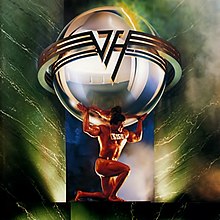
Van Halen was an American rock band formed in Pasadena, California, in 1973. Credited with restoring hard rock to the forefront of the music scene, Van Halen was known for their energetic live performances and for the virtuosity of its guitarist, Eddie Van Halen. The band was inducted into the Rock and Roll Hall of Fame in 2007.

Van Halen is the debut studio album by American rock band Van Halen, released on February 10, 1978, by Warner Bros. Records. Widely regarded as one of the greatest debut albums in rock music, the album was a major commercial success, peaking at number 19 on the Billboard 200. It has sold more than 10 million copies in the United States, receiving a Diamond certification from the Recording Industry Association of America (RIAA) and making it one of the best-selling albums in the country.

Van Halen II is the second studio album by American rock band Van Halen. Released by Warner Bros Records on March 23, 1979, it peaked at number six on the U.S. Billboard 200 and yielded hit singles "Dance the Night Away" and "Beautiful Girls." As of 2004, it's sold almost six million copies in the United States. Critical reaction to the album has been positive, with The Rolling Stone Album Guide praising the "feel-good, party atmosphere" of the songs.

Women and Children First is the third studio album by American rock band Van Halen, released on March 26, 1980, on Warner Bros. Records. Produced by Ted Templeman and engineered by Donn Landee, it was the first Van Halen album not to feature any cover songs, and is described by critic Stephen Thomas Erlewine as "[the] record where the group started to get heavier, both sonically and, to a lesser extent, thematically."

Fair Warning is the fourth studio album by American rock band Van Halen. Released on April 29, 1981, it sold more than two million copies in the United States, but was still the band's slowest-selling album of the David Lee Roth era. Despite the album's commercially disappointing sales, Fair Warning was met with mostly positive reviews from critics.
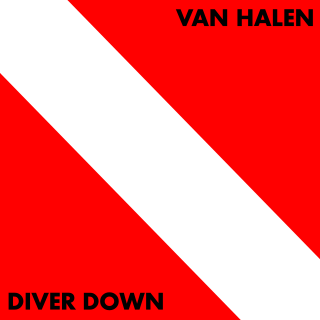
Diver Down is the fifth studio album by American rock band Van Halen, released on April 14, 1982. It spent 65 weeks on the album chart in the United States and had, by 1998, sold four million copies in the United States.
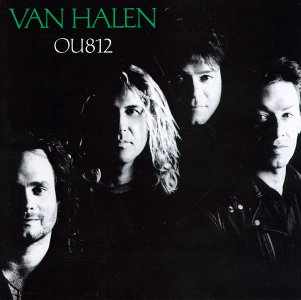
OU812 is the eighth studio album by American rock band Van Halen. It was released in 1988 and is the band's second album to feature vocalist Sammy Hagar. Van Halen began work on the album in September 1987 and completed it in April 1988, one month before its release.
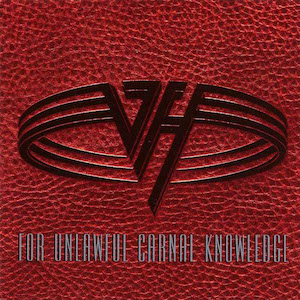
For Unlawful Carnal Knowledge is the ninth studio album by American rock band Van Halen. It was released on June 17, 1991, on Warner Bros. Records and is the third to feature vocalist Sammy Hagar. It debuted at number 1 on the Billboard 200 album chart and maintained the position for three consecutive weeks. The album marked a record in the band's history, seeing seven of its eleven tracks released as singles.

Live: Right Here, Right Now. is the first live album by American rock band Van Halen, released in 1993. It is the band's only live album featuring Sammy Hagar and the only live album by Van Halen until the release of Tokyo Dome Live in Concert in 2015.

Balance is the tenth studio album by American rock band Van Halen, released on January 24, 1995, by Warner Bros. Records. The album is the last of the band's four studio releases to feature Sammy Hagar as the lead singer. It is also the final Van Halen album to feature bassist Michael Anthony in its entirety. Balance reached number 1 on the U.S. Billboard 200 in February 1995 and reached triple platinum status on May 12, 2004, by selling more than three million copies in the US. "The Seventh Seal" was nominated for a Grammy for Best Hard Rock Performance.

The Best of Both Worlds is the second greatest hits album by American rock band Van Halen, released on July 20, 2004, on Warner Bros. The compilation features material recorded with lead vocalists David Lee Roth and Sammy Hagar, but omits Gary Cherone's three-year tenure with the band. Prior to The Best of Both Worlds's release, Hagar reunited with Van Halen, and the band recorded three new tracks to include on the release.

1984 is the sixth studio album by American rock band Van Halen, released on January 9, 1984. It was the last Van Halen studio album until A Different Kind of Truth (2012) to feature lead singer David Lee Roth, who left the band in 1985 following creative differences. This is the final full-length album to feature all four original members, although they reunited briefly in 2000 to start work on what would much later become 2012's A Different Kind of Truth. Roth returned in 2007, but Eddie's son Wolfgang replaced Anthony in 2006. 1984 and Van Halen's self-titled debut abum are the band's best-selling albums, each having sold more than 10 million copies in the United States.

Best Of – Volume I is the first greatest hits album by American hard rock band Van Halen, released on October 22, 1996.
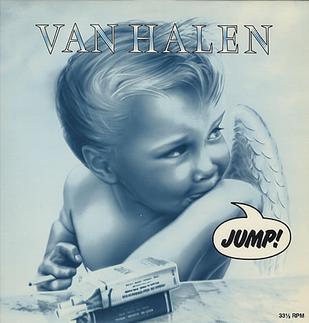
"Jump" is a song by American rock band Van Halen. It was released in December 1983 as the lead single of their sixth studio album, 1984. It is Van Halen's most successful single, reaching number 1 on the US Billboard Hot 100. The song differs from earlier Van Halen songs in that it is driven by a keyboard riff, although the song does contain a guitar solo. David Lee Roth dedicated the song to martial artist Benny "The Jet" Urquidez, of whom he was a student. In 2021, Rolling Stone ranked "Jump" at number 177 on its updated list of the "500 Greatest Songs of All Time".

Eat 'Em and Smile is the debut studio album by former Van Halen singer David Lee Roth, released on July 7, 1986, after his unpredicted successful debut EP Crazy from the Heat (1985).

Montrose is the debut studio album by American hard rock band Montrose, released in October 1973 by Warner Bros. It was produced by Ted Templeman. Montrose marks the career debut of singer-guitarist Sammy Hagar, who would later achieve significant success as a solo artist and as a member of Van Halen.

"I'll Wait" is a song by American rock band Van Halen, taken from their sixth studio album, 1984 (1984). It was written by band members Eddie Van Halen, Alex Van Halen, Michael Anthony and David Lee Roth, along with Michael McDonald, and produced by Ted Templeman.

I Never Said Goodbye is the ninth studio album by American rock musician Sammy Hagar, released on June 23, 1987, by Geffen Records. It was his first solo album since 1984's VOA, released while he was a member of Van Halen. The album was recorded in ten days under a contractual obligation to Geffen Records as a condition of his leaving the company to join Van Halen and their record label, Warner Bros. Records. The album spent 23 weeks on the Billboard 200 chart and became his highest charting solo album, peaking at number 14 on August 15, 1987.

"Love Walks In" is a power ballad by American rock band Van Halen released as the third single from the band's seventh studio album, 5150 (1986). It was the first song the band wrote with vocalist Sammy Hagar. It peaked at number 4 on the US Billboard Mainstream Rock Songs chart, and reached number 22 on the Billboard Hot 100.

A Different Kind of Truth is the twelfth and final studio album by American rock band Van Halen. Released on February 7, 2012, by Interscope Records, this is Van Halen's only studio album on Interscope and its first full-length album of studio material with lead singer David Lee Roth since 1984. Likewise, A Different Kind of Truth was Van Halen's first studio album since 1998's Van Halen III, as well as their only studio album recorded without bassist Michael Anthony, who had played bass on all of the band's previous albums; Eddie Van Halen's son Wolfgang replaced Anthony for the album, making this his only studio album with the band. It would also be Van Halen's final studio album before Eddie's death and the group's subsequent disbandment in 2020.
